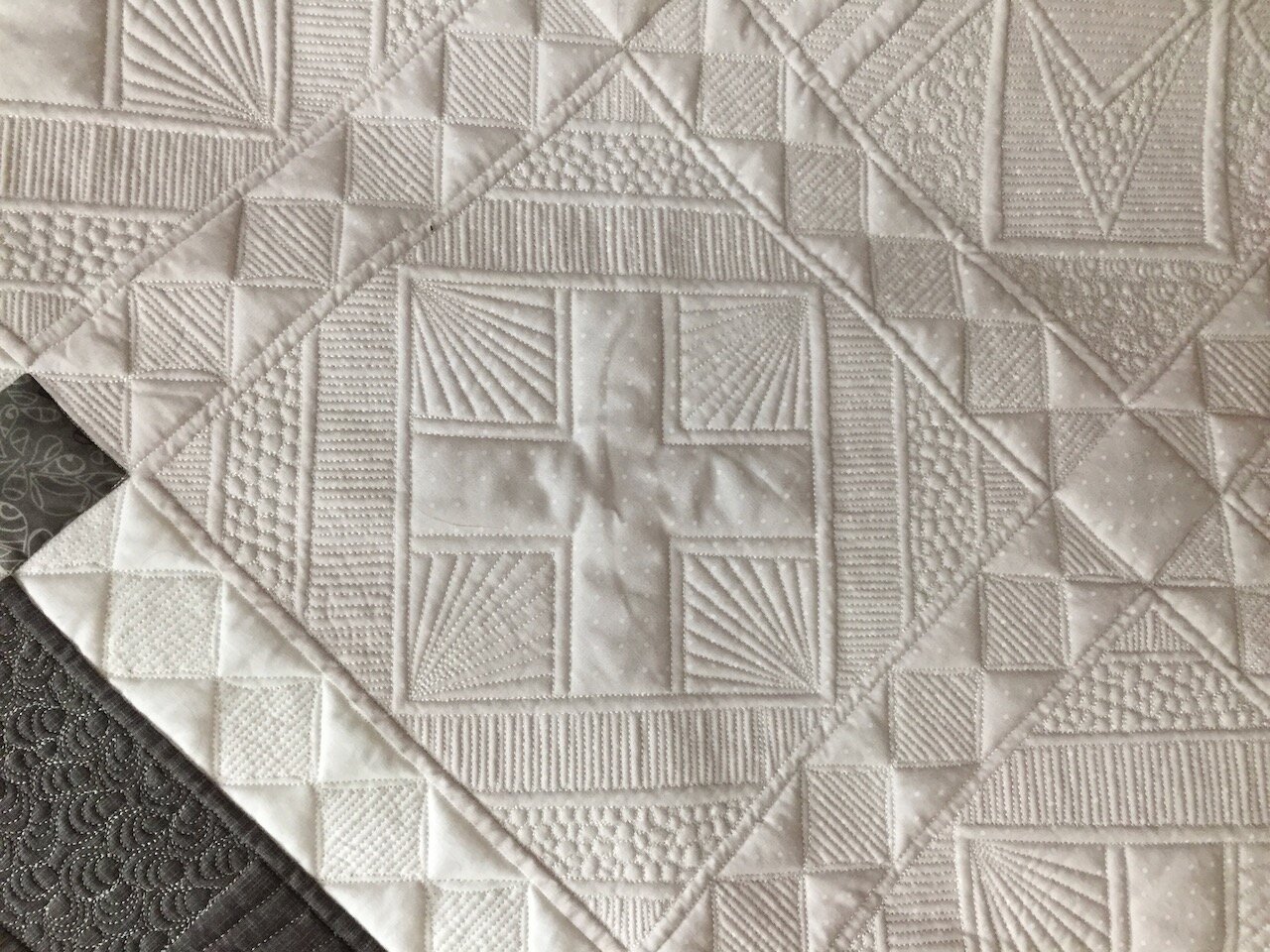The free motion quilting journey starts when you decide you want to break free of “the ditch” and do something more creative when it comes to quilting your project. It can feel a little scary because free motion quilting can seem intimidating and overwhelming when you start your first project. Free motion quilting is a technique that has lot of variations and a huge amount of room for creativity. Striving to master those variations and use them creatively is what motivates most free motion quilters and also what makes it both scary and exciting when you first start. At this stage it’s easy to think that it’s all about getting even stitches and learning motifs… but it is so much more!
When you are first learning to free motion quilt, you will be focussed on the mechanics of the technique: learning how to move the quilt, getting even stitches, and creating motifs that look like you want them to. As you become more familiar with the mechanics and build up some “muscle memory”, your results will improve and you’ll start building a repertoire of motifs that you can confidently quilt. You’ll also start to develop a feel for what motifs will work on certain projects and will start making decisions about your projects to provide opportunities for creativity at the quilting stage. At this stage you’ll be comfortable enough that you may even start looking for projects where you can use your free motion quilting knowledge creatively so you can put your own “stamp” on your projects. It’s when they’ve reached this level of confidence and skill that most quilters are ready for the next free motion quilting steps allowing them to unleash their creativity.
The next stage is when you see quilters branching out into variations in free motion quilting. The first one often being ruler quilting. Although ruler quilting is a technique in and of itself, I include it under the umbrella of free motion quilting because it’s done in a very similar way. I think it should become a part of a free motion quilter’s repertoire. Ruler quilting is also a technique that has many variations with a dizzying number of motifs, rulers, and templates. The rulers and templates allow you to create very precise designs which are effective in providing structure to the look of the quilting on your projects. This precision that ruler quilting brings to a quilt design provides a great foundation for the more free-form motifs and can provide a structure for the quilt design that helps the eye move across the quilt easily. The combination of ruler quilting and free motion quilting results in amazing quilt designs.
Another way that quilters at this stage branch out is in their choice of projects. Free motion quilting is such a creative technique that quilters begin to choose projects that showcase their quilting. They start making projects that contain areas of space that they fill up with their favourite motifs and/or ruler quilting in ways that enhance the project but also make the quilting the star. It’s usually at this stage where quilters will start doing whole cloth quilts. They start with a blank canvas and fill it with their quilting to create stunning designs that rely only on the quilting for the effect. You know you have “arrived” if you can pull off a whole cloth quilt with confidence.
It’s also at this stage that many quilters seriously start considering learning how to use a long-arm quilting machine. A long-arm machine is not necessary for advanced free motion quilting but, if you can afford it, you’ll be amazed at how many possibilities it will open up for you. First, you’ll be able to quilt your projects much faster than on a domestic sewing machine but you will also be able to create quilting designs that were not possible before. The extra space that you have when you use a long-arm quilting machine allows you to create designs that just don’t “fit” on a domestic machine. Long-arming can be a “game changer” for those who can afford it.
The ultimate stage is where the quilter has become so comfortable and confident with their skills that they are willing to experiment in ways that really push their creativity. You’ll see them create projects with designs using trapunto or other 3D effects. You may see them experimenting with different materials such as cork or leather. Most of all you will see them combining their creativity, knowledge, and skill to surprise and inspire other quilters. This stage never really ends because the opportunities for creativity are endless. At this point in their development the quilter is a master of their craft and they are only limited by their imagination. They are a “Ninja Quilter”!
Sharon Blackmore of Love Shack Quilts
If you never start to free motion quilt, just think of the creativity that you’ll never explore!
Don’t miss out: start your own journey by exploring and creating with free motion quilting now!
Download the free Get Out of the Ditch! guide to learn how to start free motion quilting by clicking here.
Now that you know the reasons you need to learn free motion quilting, check out my course “First Steps Into Free Motion Quilting” by clicking here.
If you already know how to free motion quilt then you may be interested in “3 Ways to Improve Your Free Motion Quilting” by clicking here.
P.S. Do you strive to improve your quilting skills? Do you want to have fun doing it? Do you want to meet other quilters in a supportive, safe environment? If you answered “yes” to these questions, you need to join The Quilter’s Way. The Quilter’s Way is the only quilting membership site that includes both training and an active, supportive online community. Don’t wait another day! Join now.







